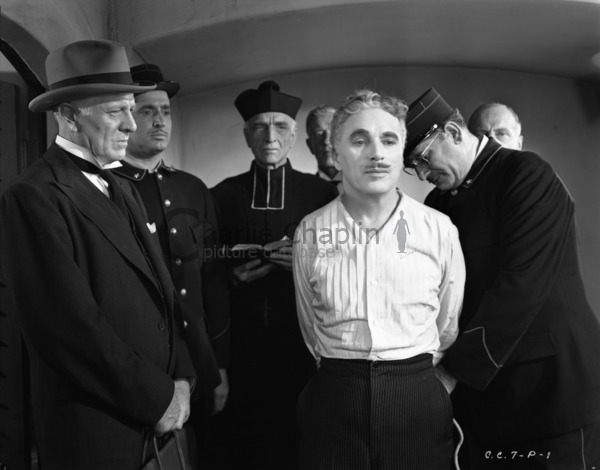Charlie Chaplin - 8.
**Monsieur Verdoux, 1947
11/03/2017.
Overview of His Life :
Filming Monsieur Verdoux : 3.
I.
Chaplin uses the story to make a satirical comparison between private and public murder.
II.
Verdoux declares at his trial, “As for being a mass murderer, does not the world encourage it? Is it not building weapons of destruction for the sole purpose of mass killing?” and tells a reporter who comes in interview him in the death cell, “One murder makes a villain …. Millions a hero. Numbers sanctify, my good friend.”
**Chaplin with Martha Raye in Monsieur Verdoux
III.
Sentiments like these were deeply suspect in 1940s America, which had already begun to slide into the paranoia and witch-hunting of the Cold War years.
IV.
The Breen Office - the American cinema’s self-censorship organisation - initially disapproved the script in its entirety, claiming that it “impugns the present-day social structure” - even though the story was set in France between the two World Wars.
V.
In the end they were satisfied with only a few cuts, though the prudery of those times demanded the removal of all scenes that suggested that a husband and wife might share the same bed or that a girl was a prostitute.
To be continued ...
**Martha Raye and Chaplin on the set
11/03/2017.
Overview of His Life :
Filming Monsieur Verdoux : 3.
I.
Chaplin uses the story to make a satirical comparison between private and public murder.
II.
Verdoux declares at his trial, “As for being a mass murderer, does not the world encourage it? Is it not building weapons of destruction for the sole purpose of mass killing?” and tells a reporter who comes in interview him in the death cell, “One murder makes a villain …. Millions a hero. Numbers sanctify, my good friend.”
**Chaplin with Martha Raye in Monsieur Verdoux
III.
Sentiments like these were deeply suspect in 1940s America, which had already begun to slide into the paranoia and witch-hunting of the Cold War years.
IV.
The Breen Office - the American cinema’s self-censorship organisation - initially disapproved the script in its entirety, claiming that it “impugns the present-day social structure” - even though the story was set in France between the two World Wars.
V.
In the end they were satisfied with only a few cuts, though the prudery of those times demanded the removal of all scenes that suggested that a husband and wife might share the same bed or that a girl was a prostitute.
To be continued ...
**Martha Raye and Chaplin on the set




.jpg)
.jpg)
Comments
Post a Comment